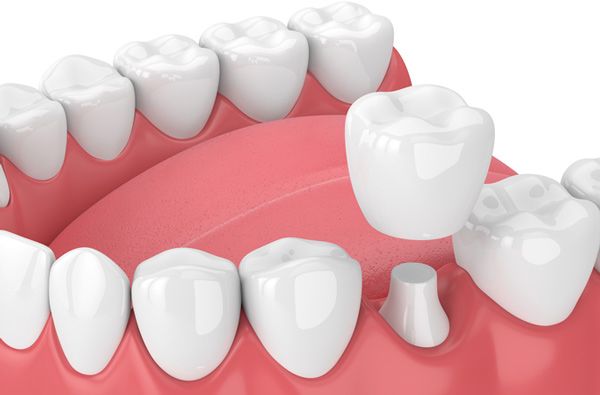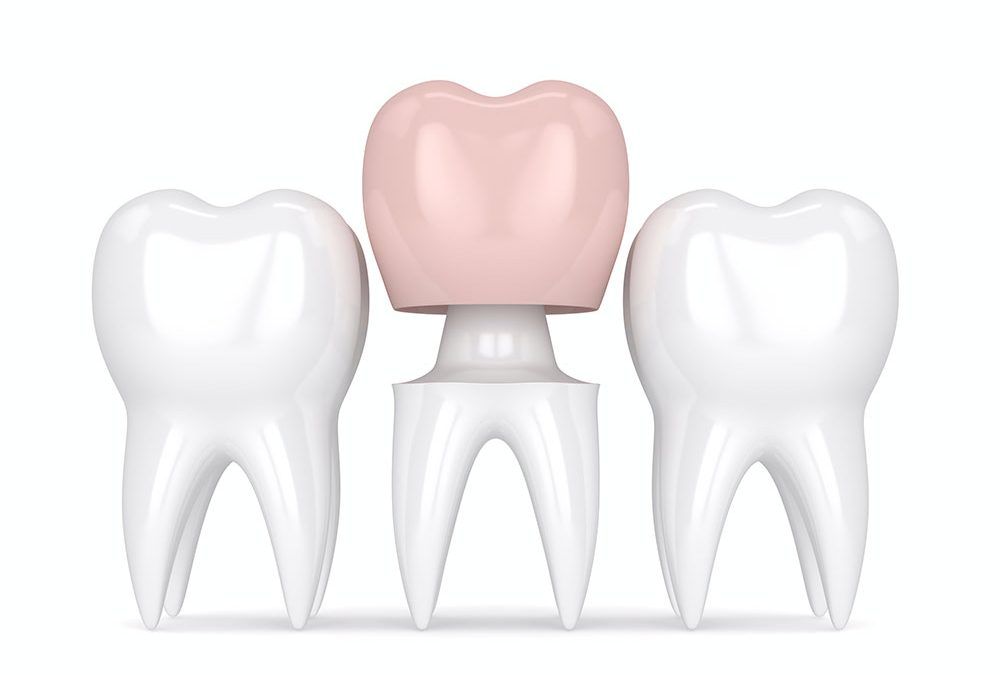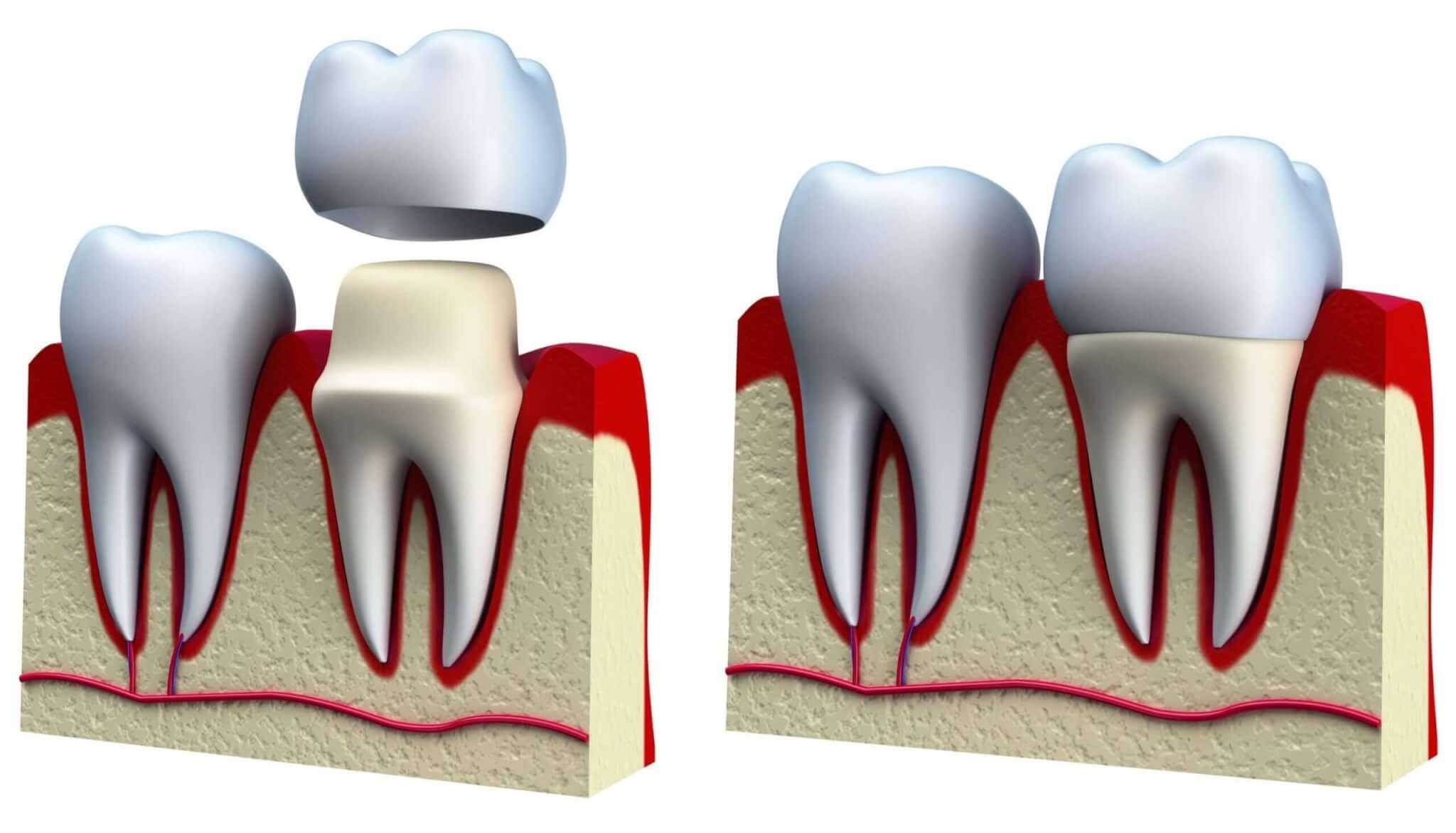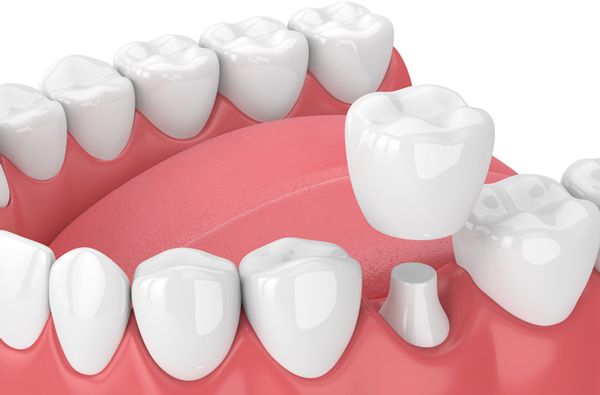How Long Does a Dental Crown Last?
Entering the world of dental care is like going into a universe where smiles are created and oral health reigns supreme. Within this sector, the concept of lifespan dances smoothly, especially when it comes to the faithful protector of teeth: the dental crown.

How Long Does a Dental Crown Last?
Entering the world of dental care is like going into a universe where smiles are created and oral health reigns supreme. Within this sector, the concept of lifespan dances smoothly, especially when it comes to the faithful protector of teeth: the dental crown. The crown is a symbol of strength and tenacity, protecting teeth from the ravages of time and wear. However, beyond its firm veneer is a curiosity that whispers softly in the minds of many: "How long does a dental crown truly last?" This question, like a constant symphony, reverberates through dental clinic corridors and patients' minds, eliciting a yearning for understanding and certainty. So, with the sparkle of dental instruments and the quiet hum of equipment, the adventure begins—a quest to unravel the enigmatic longevity of the dental crown, a voyage that crosses the boundaries of science, technology, and the delicate tapestry of human biology.
What is a dental crown?
A dental crown, sometimes referred to as a "crown," is a type of dental treatment that covers or caps a damaged or diseased tooth. It is a tooth-shaped cap that covers a tooth to restore its form, size, strength, and look while preventing it from future damage.Invest in your health for a brighter future. Our comprehensive medical programs produce actual results while you enjoy the beauty and peace of our location.

Who needs a dental crown?
Dental crowns are appropriate for a variety of dental problems and scenarios. Here are some frequent reasons why someone may require a dental crown:
Tooth Decay
When a tooth is severely damaged and cannot be properly treated with a dental filling, a crown is commonly utilized to cover and protect the remaining tooth structure.
Fractured or Broken Tooth
A dental crown can repair and strengthen teeth that have been damaged or shattered as a result of trauma or accident.
Large Fillings
If a tooth has a big filling compared to its size, it may deteriorate with time. A crown can be used to strengthen and protect a tooth.
Root Canal Treatment
The tooth can become brittle following a root canal operation, which removes the tooth's inner pulp. A crown is frequently put over the tooth to add strength and protection.
Cosmetic Enhancement
Crowns can be used cosmetically to improve the appearance of discolored, malformed, or misaligned teeth.
Dental implants
Crowns are typically used to cover dental implants, which are artificial tooth roots placed in the jawbone to replace lost teeth.
Crowns anchor dental bridges
Which replace lost teeth by bridging the space between healthy teeth.
Cracked teeth.
Crowns are commonly used to treat teeth with cracks that do not extend below the gum line, preventing future cracking or damage.
A dentist or dental expert often decides to install a dental crown after doing a comprehensive examination and assessment of the individual tooth problem. The location of the tooth, the patient's preferences, and the dentist's advice all influence the material used for the crown.
What are the types of dental crowns?
Every kind of dental crown has benefits, drawbacks, and best uses. The position of the tooth, the patient's tastes, and the dentist's advice will all influence the kind of crown that is chosen. The following list includes typical crown types:

All-Ceramic Porcelain Crowns
Because porcelain crowns closely resemble real teeth in appearance, they are quite popular. These work well with front teeth and other very conspicuous parts of the mouth. Because porcelain crowns may be matched in color to nearby teeth, they look great.
Crowns, Porcelain-Fused-to-Metal (PFM)
A porcelain outside layer gives PFM crowns a natural look with a metal substructure for strength. Back teeth where more power is required frequently get them. Still, occasionally the gumline may show the metal edge.
Crowns Made of Metal
Metal crowns are renowned for their extraordinary strength and longevity, particularly those composed of gold or other metal alloys. Compared with all-ceramic crowns, they are less prone to chip or shatter. They are usually used on molars, however their metallic hue makes them less common for visible teeth.
Zirconia Crowns
Zirconium oxide, a sturdy substance that resembles tooth enamel, is used to make zirconia crowns. They are a flexible option for front and back teeth since they are strong and attractive. Like real teeth, zirconia crowns can be transparent.
Crowns Made of Composite Resin
The composite resin used to make these crowns has a hue similar to teeth. Compared to other crown varieties, their cost is lower. However, they could not be as strong, which makes them an excellent choice in some circumstances or for interim crowns.
Transient Crowns
While a permanent crown is being created, temporary crowns, which are often composed of acrylic or stainless steel, are used as a temporary fix. They safeguard the tooth until the final restoration is done, although they are not as strong as permanent crowns.
Metal-Only (Gold) Crowns
Because gold crowns are so biocompatible and durable, they have been in use for a very long time. They are renowned for their durability and are most frequently utilized on molars. But their gold hue detracts from their visual charm.
The particular therapeutic requirements, the patient's budget, and their esthetic considerations will all influence the crown material selection. A dentist will take these things into account when advising on the best kind of crown for a given circumstance.
How does the procedure work?
The process of getting a dental crown usually takes a few stages and two or more dentist sessions. An outline of the typical workflow for this procedure is provided below:
Dental Examine and Assessment
An X-ray and dental exam are the first steps in determining if a tooth need a crown. Your dentist will assess if a crown is the right course of action and go over the several crown materials and styles that are available.
Preparing the Teeth
Should a crown be judged required, the tooth is made ready for it. This is sculpting the tooth to fit the crown after removing any damaged or decaying areas.
Sometimes a build-up or core is inserted to provide the crown more stability if the tooth is badly damaged or has had a root canal.
Impression Making
Your dentist will take an imprint, or mold, of the prepared tooth together with the surrounding teeth, after tooth preparation. The model for the bespoke crown is this impression.
Temporary Crown if Necessary
The prepared tooth may be protected in the interim with a temporary crown if the permanent crown fabrication (which is typically completed at a dental laboratory) will take some time. Usually, acrylic makes up temporary crowns.
Fabricating Crowns
A dental laboratory receives the imprint, and there, knowledgeable experts make the permanent crown. A week or more might pass throughout this procedure.
Placement of Crown
You will see the dentist once the permanent crown is prepared for final placement. The dentist will examine the permanent crown's fit and look after removing the temporary crown, if one was used. A correction of the crown will guarantee correct fit and alignment of the bite.
A crown will be permanently bonded or cemented when both you and the dentist are happy with its fit and look.
Polishing and Final Adjustments
Your dentist will make last refinements to guarantee a comfortable and natural bite after the crown is firmly in place.
Your natural teeth's luster may be matched by polishing your crown.
Care and Instructions Following Procedure
Your dentist will give you information on how to look after your new crown and any particular things to remember.
You could arrange for routine follow-up visits to check on the state of the crown.
Depending on the particulars, the whole process—from the first assessment to the final crown placement—can take weeks or longer. With its long-lasting protection and beauty, dental crowns are intended to restore the function and look of the tooth.

How long does a dental crown last?
Its longevity is mostly determined by the kind of crown material. Gold and other metal crowns are renowned for their lengthy lifespan—they may endure decades. When taken good care of, all ceramic or porcelain-fused-to-metal crowns may likewise be quite long-lasting.
Longevity of a dental crown depends on good oral hygiene habits, such as routine brushing, flossing, and dental exams. Around the crown, good care helps ward against gum disease and decay.
Too much grinding or clenching (bruxism) of the teeth might put more strain on the crown and cause damage or deterioration too soon. Should your dentist advise it, using a nightguard can help prevent bruxism of the crown.
It is possible to save the crown by giving up habits like biting on hard things, eating ice, and using your teeth to open packages. Reducing the amount of really sticky or hard meals can also help to prolong the life of the crown.
Early detection and treatment of any crown problems requires routine dental examinations. Your dentist can see wear or damage and respond appropriately to preserve the integrity of the crown.
In due course, dental crowns may gradually deteriorate or sustain little chips or fractures. When a crown exhibits wear or damage, it could need to be fixed or replaced.
The state of the tooth under the crown might affect how long it lasts as well. Stability of the crown may be impacted if the tooth has problems, including repeated decay or infection.
Though they are made to last, dental crowns are not permanent and may ultimately need to be replaced. If you have a dental crown, to guarantee its life and continuous performance, take care of it as directed by your dentist and schedule routine examinations.
How to care for dental crowns?
Maintaining excellent oral health and extending the life of dental crowns need proper care. Following are some dental crown care guidelines:
1) Use fluoride toothpaste to brush your teeth at least twice a day. To prevent abrasive damage on the crown, use a toothbrush with soft bristles.
2) To keep your gums and spaces between your teeth clean, floss every day.
3) To help manage germs in your mouth, think about following your dentist's recommendation and using an antimicrobial mouthwash.
4) Chewing on hard items like pencils, ice, or sweets might harm the crown, therefore refrain from doing so.
5) Never open bottles or packages with your teeth.
6) Use a nightguard that is specially fitted if you have a history of bruxism, or grinding your teeth while you sleep. This can lessen the chance of the crown and your natural teeth being subjected to undue strain.
7) Eat less excessively hard or sticky food since this might strain the crown more than necessary or cause it to come off.
8) Cut back on acidic and sugary meals and drinks since they can lengthen the crown's lifespan by causing gum disease and decay.
9) See your dentist for routine examinations and expert cleanings. The health of the tooth beneath the crown may be observed by your dentist.If problems are found with the crown or your dental health, they can be fixed quickly.
10) Water is the best way to stay hydrated.
11) Limiting alcohol intake and quitting smoking are two behaviors that might exacerbate oral health issues.
12) Keep an eye out for any indications of gum disease or decay around the crown. If you have any unexpected symptoms, such swelling or sensitivity, get in touch with your dentist.
13) Get in touch with your dentist right away if you see any changes in the way your crown fits, feels, or looks, such as sensitivity, discomfort, or a loose crown.
14) Keep track of all of your dental appointments, noting the date the crown was placed and any subsequently necessary corrections or maintenance.
15) See your dentist about the necessity of a crown replacement if it is worn down, broken, or nearing the end of its life.

How Long Does Crown Last Summary Table
Amount of Sessions | 1-3 sessions | Time to return to work | Right After the operation |
Operation Time | 4-7 days | Recovery | 1 day |
Anesthesia | Local anesthesia | Persistence of Results | Permanent |
Sensitivity Time | During operation | Hospital Stay | None |
Why Should I Choose AvrupaMed?
Avrupamed is an accredited health tourism consultancy and cooperation project, one of few largest health tourism agencies of Turkey with 25 years of experience of their managing partners in the health sector. Our aim is your dream of getting the desired look, to ensure that you reach through physicians who are reliable, experienced, and have achieved a high level of patient satisfaction.
Avrupamed does not let you walk the path alone, it tailors your plan according to budget and protects your patient’s rights, stays in touch with you, and follows you after you return to your country.
